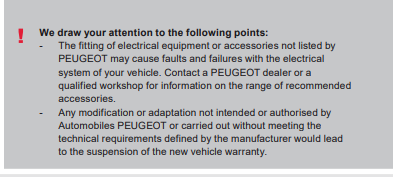Hi,
This is quit frightening . For the second time in 1 week , my car suddenly stopped (completely shut off, no current, etc...). after recently equipping it (2 weeks ago) with an Orion smart 12v/12v 18A (isolated model) for feeding a 50W frig.
Conditions summary: car peugeot 5008 (1.6HDI 112 FAP ) with start-stop, AGM battery 70AH ( perfect condition changed 5 month ago, precisely in view of the Orion equipment, while the old one was still in good condition), new auxiliary battery (2 weeks old), frig consuming at most 5A on the 12v battery, cabling AWG6 (16mm2). Orion mode: charger, Gel Victron deep discharge mode, all standard Volt and timing parameters, measured with motor on : 14,72v in 14.2v out.
Never any issue with the car (battery, electricity, etc..) till this add-on (more than 100K kms).
Breakdowns :
- Second breakdown :everything working fine for more than 1000 Kms during several days, and suddenly, gently driving at 50 km/h, shortcut or over current ??, car stops instantaneously (in the middle of the road, no current, no way to move cause electric brake automatically on, no warning). No apparent reason. Need to remove main battery connection (hopefully "clic" system). (Obviously, removed the Orion connection to main and auxiliary just before, to be safe). After connecting back the main battery, car again operational instantaneously. After several hundreds of kms without Orion, when at home, I reconnect everything and check motor running : everything OK, no message.
-First breakdown was after driving 10km to refuel at a station, then no way to restart (no current) same remedy : remove then put back the main bat connection).
Note, obviously system mounted by a professional electricity car mechanic, checked (cabling and parameters) and re-checked after the first breakdown.
What is wrong? I would not like to throw away the system (fridge used for carrying medical system which must remain before 7°C°, and I don't see anything not set up and tested "by the book".
Thank you for helping. Best regards.

